Vincenzo Perugi — the man who made "Gioconda" a legend
August 21, 1911 the legendary painting Yes Vinci was abducted by an employee of the Louvre, the Italian mirror master Vincenzo Perugia.
Today it is difficult to find a person who does not know what a "Mona Lisa" is. Moreover, the Leonardo da canvas Vinci is the most recognizable portrait in the history of world painting. But it wasn't always like that. The ingenious painting of the Renaissance, although appreciated by experts since its creation, has gained popularity among the masses relatively recently.
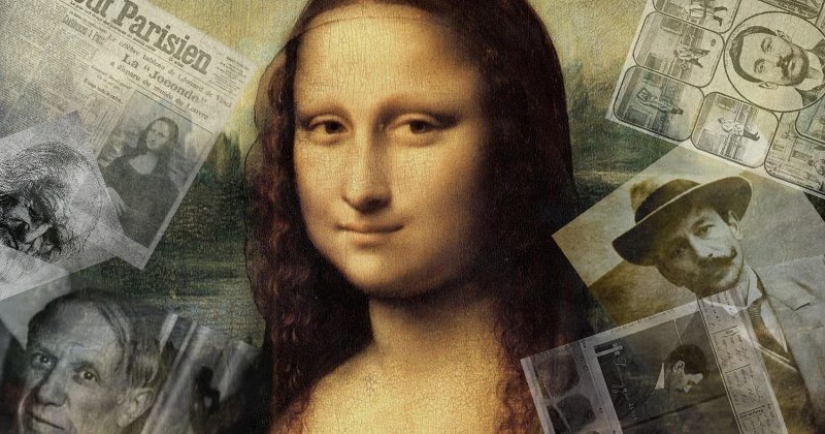
Oddly enough, but the legend of the "Mona Lisa" became just a little more than a century ago. Everyone who has been to the Louvre probably remembers the excitement around the hall where Leonardo's painting is located. Thousands of people are eager to catch a glimpse, over the shoulders of other visitors, to see this small and not brilliant painting, covered with bulletproof glass.

But just a century ago, "Gioconda" simply hung on the wall of the museum among other paintings and attracted the attention of only connoisseurs of Renaissance painting. Moreover, when the painting disappeared on August 22, 1911, no one raised the alarm and the loss was reported to the police only a few hours later.

The first to notice the disappearance of the immortal masterpiece was a visitor to the Louvre, the artist Louis Berud. On the wall, which for the last 5 years had been decorated by a woman with a mysterious smile, he saw four lonely nails. As a conscious citizen of the Republic, Berud immediately notified the museum staff about the loss. The employees of the Louvre had no idea who could have taken the painting and assumed that with the permission of the administration, it was seized for photography by employees of an advertising agency.
By the evening it became obvious that no one was going to return the valuable canvas and that the Gioconda had been treacherously stolen in broad daylight. I had to call the police and close the Louvre for an investigation. The museum staff responsible for the exposition were interrogated and, after determining their innocence in the theft, dismissed for negligence.

The investigation, conducted by the best inspectors in Paris, took 24 months. First of all, the criminal was sought among those who were related to art and knew the real value of the exhibit. In particular, the young Pablo Picasso, who at one time too zealously admired the painting and the poet Guillaume Apollinaire, who even had to sit behind bars for a while, came under suspicion.
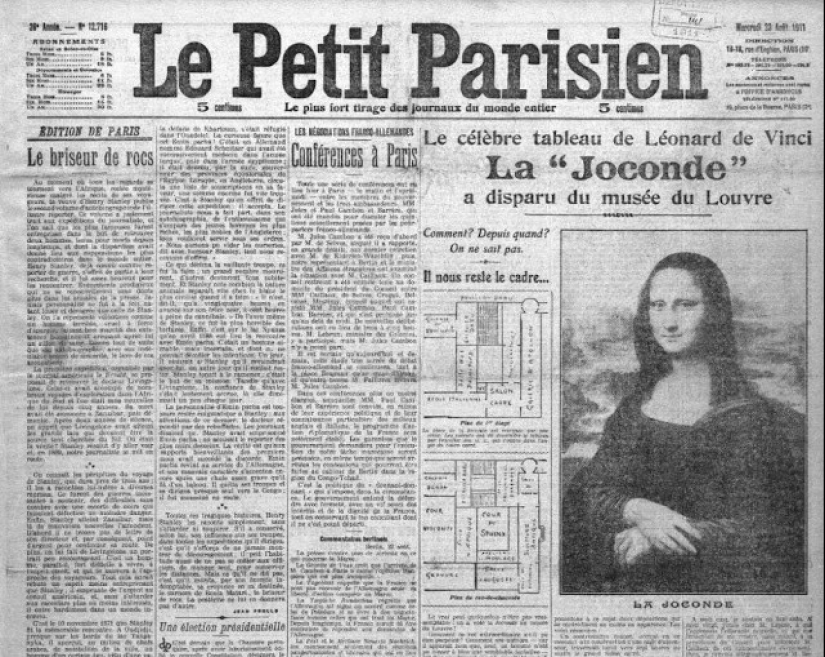
All two years of active searches, "Gioconda" did not leave the editorials of French publications. The Parisian newspaper Le Petit Parisien was especially zealous, which decorated each issue with an image of a painting for exactly a month. Every day the fame of the painting grew and very soon there were no people in France who would not have heard about the loud theft from the Louvre.
Since the investigation was stomping on the spot and the journalists had nothing much to write, they began to disassemble Leonardo's canvas "by cogs" and soon literally all the newspapermen turned into experts in the field of painting. Newspaper articles discussed the shape of the great master's brushstrokes, the play of shadows in the background, the rectangular composition and many other details previously known only to painters and restorers.

Of course, the mysterious smile of the woman depicted in the painting was also discussed. All sorts of assumptions were made and discussions fascinated not only artists and journalists, but also Frenchmen who have nothing to do with art.
The excitement around the canvas caused a surge of interest in charity courses on the history of art, where even factory workers and street vendors hurried to enroll. Among the beau monde, it became a sign of good manners to worry about the painting and express various versions about its abduction. The only news that could take away the audience in the press from Gioconda is the death of the Titanic.

The best French investigators and many private detectives were powerless and, perhaps, we would have lost the Leonardo painting forever if it had not been found by itself. Two years after the Mona Lisa was stolen, a letter from a certain Vincenzo Perugia came to the director of the Florence Ufizzi Gallery. In a short message, this man said that the canvas was in his possession and for a small fee he was ready to return it to its true owner — the people of Italy.
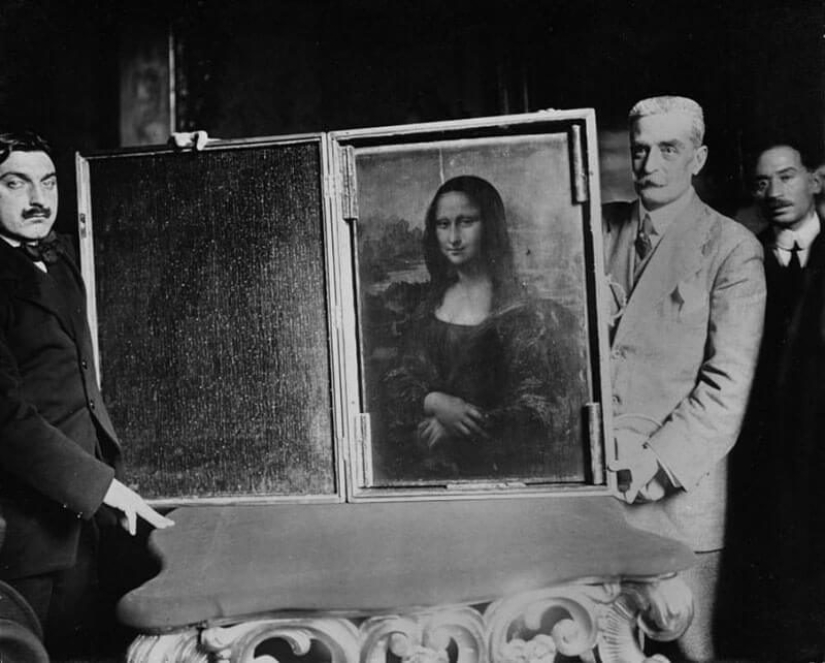
Perugi was immediately captured and at the first interrogation told how he managed to commit such an audacious theft. The 32-year-old Vincenzo was an employee of the Louvre and took the painting out of the museum on August 21, 1911, simply wrapped in his work coat. Considering the size of the painting 53 × 77 cm, it was not easy to take it out even in this way, but Perugia was lucky and no one paid attention to him at the exit from the museum.
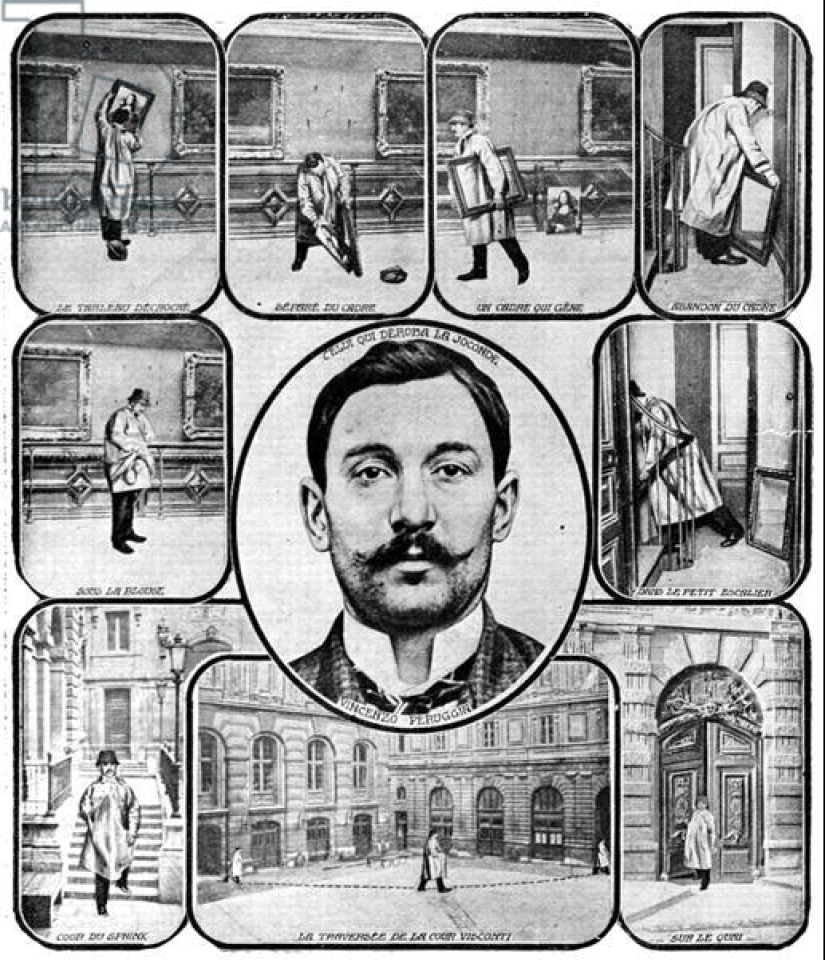
During interrogations, the Italian insisted that he had stolen the painting. Vinci for purely patriotic reasons. The man convinced the investigators that his goal was to return the painting to Italy, from where Napoleon brazenly took it. Vincenzo's version was not very convincing. Firstly, the painting was taken out of Italy by its creator himself, and secondly, the criminal's correspondence with relatives was found, in which he assured them that soon all Perugia would become rich.

The court did not acquit Vincenzo, but did not punish him severely. The patriotic version of the high-profile theft of the masterpiece was liked by both the authorities and ordinary Italians. It was taken into account that Perugia might not have known the history of moving the Mona Lisa to Paris, and the behavior of an intelligent and passionately loving man disposed judges to him.
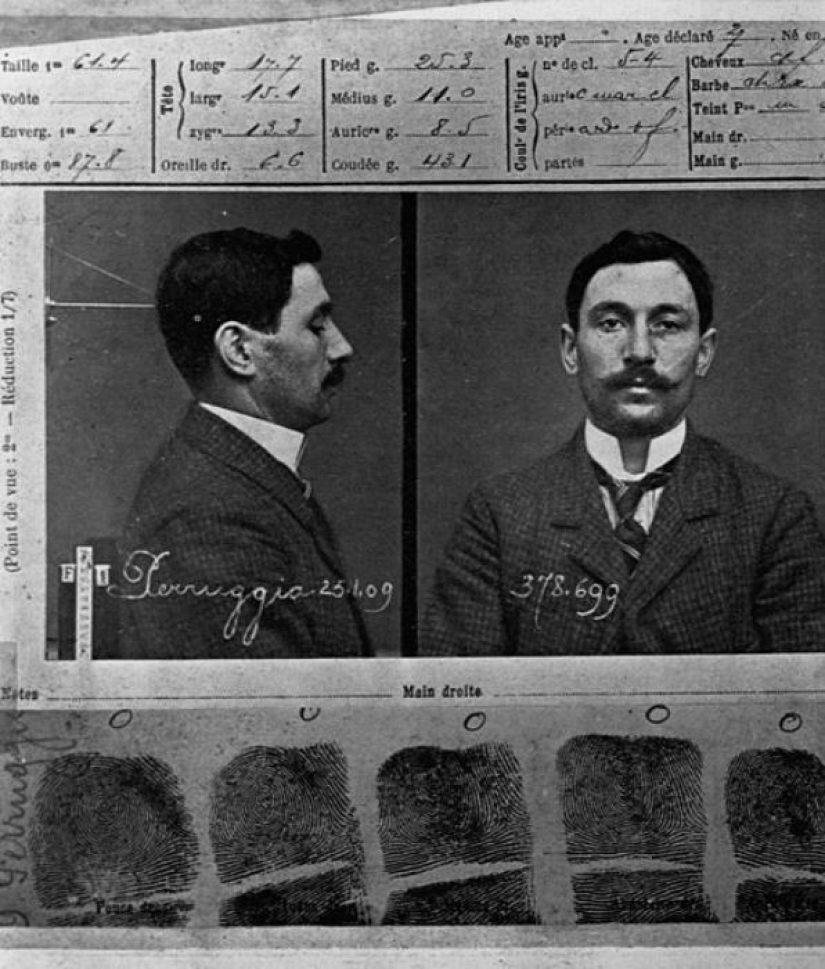
As a result, Vincenzo Perugi received a ridiculous prison sentence of 1 year and 15 days, of which he served only 7 months behind bars. The fame of the patriot and the thief of the "Mona Lisa" made the man famous. After leaving prison, Perugia fought on the fronts of the First World War, got a family and quite unexpectedly for the patriot of Italy settled in Paris. In the French capital, he worked as a decorator and had no end of clients.

The abduction also had a beneficial effect on the Mona Lisa. After returning to France, the canvas went on a grand tour, during which she visited many European capitals. Everywhere the picture was greeted with delight and the number of people who wanted to see it was huge. She returned to the Louvre "Gioconda" is no longer an ordinary exhibit from the Renaissance hall, but the pearl of the main French museum, which she is to this day.
Recent articles

There are dolls very similar to living people. And there are so realistic that their appearance can only be explained by magic. ...

Japan is deservedly considered one of the safest countries in the world. Even organized crime there has a "human face" ...

Famous British photographer Bob Carlos Clarke was born in an Irish corps in 1950. In 1969 he moved to England to study art and ...